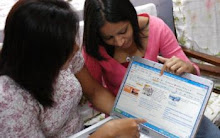Online jobs
Adsense- Adwords-Blogging-Affiliate Marketing-Article Marketing-Forum Marketing-Internet Advertising-Pay Per Click-Web Hosting- Internet Marketing-SEO-Email Marketing- Ebook Marketing……
Thursday, February 21, 2008
Top Internet Home Businesses
 It is quite obvious that once you look at the sentence above you can find it almost anywhere in online classified ads. Where has honest reviews about top home Internet business opportunities gone to? The answer is that they have gone with the honest marketers along. You can have a winning battle when you arm yourself with the right knowledge about the top 5 choices of these businesses types.Top Choice #5: Selling Physical Items OnlineYou could always choose to sell items you don't need from home such as your mobile phone or just getting old furniture to be auctioned online. This can be easily achieved by joining an auction network like eBay or perhaps other auction bid programs. Your advantage is you don't need to do any paperwork. Just digital communications.Top Choice #4: Starting Your Own Service PortalOne of the top home Internet business available today is the abundance of service portals. This is like a website which has a directory of say "rental properties available" in your local area. The person placing their properties advertisement in the website has to pay the site administrator for the directory listing service. You can start one if you know a demand in your local county.Top Choice #3: Starting A Blog To Earn From AdSenseYou could certainly earn a decent amount of money with Google Adsense. An advertising campaign which pays you if a visitor clicks on your Google advertisements on your blog. This requires a serious follow up on your keyword research activities. A favorite top home Internet business for those who have zero budget to start.Top Choice #2: Be An Affiliate Marketer Of A CompanyThere are many choices for you in this category such as an affiliate for e-books or namely the more famous ClickBank affiliate network. Though you still need to master some online marketing skills to make a decent living, it can be very rewarding because you carry no inventory.Top Choice #1: Direct Marketing Affiliate ProgramThis is getting to be more and more of a trend today. Even network marketing companies will probably mimic this type of system in the near future. You can be sure that this is the top home Internet business because of the instant payout structure. Its best when you even market digital products as there are no physical products involved.
It is quite obvious that once you look at the sentence above you can find it almost anywhere in online classified ads. Where has honest reviews about top home Internet business opportunities gone to? The answer is that they have gone with the honest marketers along. You can have a winning battle when you arm yourself with the right knowledge about the top 5 choices of these businesses types.Top Choice #5: Selling Physical Items OnlineYou could always choose to sell items you don't need from home such as your mobile phone or just getting old furniture to be auctioned online. This can be easily achieved by joining an auction network like eBay or perhaps other auction bid programs. Your advantage is you don't need to do any paperwork. Just digital communications.Top Choice #4: Starting Your Own Service PortalOne of the top home Internet business available today is the abundance of service portals. This is like a website which has a directory of say "rental properties available" in your local area. The person placing their properties advertisement in the website has to pay the site administrator for the directory listing service. You can start one if you know a demand in your local county.Top Choice #3: Starting A Blog To Earn From AdSenseYou could certainly earn a decent amount of money with Google Adsense. An advertising campaign which pays you if a visitor clicks on your Google advertisements on your blog. This requires a serious follow up on your keyword research activities. A favorite top home Internet business for those who have zero budget to start.Top Choice #2: Be An Affiliate Marketer Of A CompanyThere are many choices for you in this category such as an affiliate for e-books or namely the more famous ClickBank affiliate network. Though you still need to master some online marketing skills to make a decent living, it can be very rewarding because you carry no inventory.Top Choice #1: Direct Marketing Affiliate ProgramThis is getting to be more and more of a trend today. Even network marketing companies will probably mimic this type of system in the near future. You can be sure that this is the top home Internet business because of the instant payout structure. Its best when you even market digital products as there are no physical products involved. Internet Marketing Business
 Running your own Internet Marketing business is really the best way to make money in the world. You get to set your own hours. You can work from almost anywhere in the world. All of your efforts go towards YOUR business and YOUR success, rather than a large corporation´s. You write your own paycheck. And I don´t know of any business in the world where the start-up costs are so low (often as low as the cost of a monthly website fee), or the knowledge barrier is so small (in other trades, it can take YEARS to learn the basics).The "problem" (and I only say it´s a problem because it seems to discourage so many people) is that you have to treat your business like a business. Anyone can make a few dollars here and there online. But to get the kind of thousands-of-dollars-a-month success that lets you quit your day job and buy a bigger house, you´re going to have to put in some work upfront.To illustrate what I´m talking about, let´s look at a normal job: you go to work for a specified number of hours, and get paid a certain amount for those hours. If you´re salaried, you get a certain amount per month or year no matter how much you work. Hopefully, if you do a good job you get a raise. In either case, you´re guaranteed to make a certain amount within a specified time-frame.With an Internet marketing business (as with any business) you have to do some things upfront: you have to set up a website and a few other tools, you have to promote your site or service, etc. This can take a bit of time before you see profits. The reason an Internet marketing business is the way to go is because (if you´re doing things correctly) when you DO see the profit, you´re going to be seeing a lot more of it. And because everything is semi-automated (the order-taking, often the delivery of goods, etc.) your business requires a LOT less time later on to sustain than an hourly job.
Running your own Internet Marketing business is really the best way to make money in the world. You get to set your own hours. You can work from almost anywhere in the world. All of your efforts go towards YOUR business and YOUR success, rather than a large corporation´s. You write your own paycheck. And I don´t know of any business in the world where the start-up costs are so low (often as low as the cost of a monthly website fee), or the knowledge barrier is so small (in other trades, it can take YEARS to learn the basics).The "problem" (and I only say it´s a problem because it seems to discourage so many people) is that you have to treat your business like a business. Anyone can make a few dollars here and there online. But to get the kind of thousands-of-dollars-a-month success that lets you quit your day job and buy a bigger house, you´re going to have to put in some work upfront.To illustrate what I´m talking about, let´s look at a normal job: you go to work for a specified number of hours, and get paid a certain amount for those hours. If you´re salaried, you get a certain amount per month or year no matter how much you work. Hopefully, if you do a good job you get a raise. In either case, you´re guaranteed to make a certain amount within a specified time-frame.With an Internet marketing business (as with any business) you have to do some things upfront: you have to set up a website and a few other tools, you have to promote your site or service, etc. This can take a bit of time before you see profits. The reason an Internet marketing business is the way to go is because (if you´re doing things correctly) when you DO see the profit, you´re going to be seeing a lot more of it. And because everything is semi-automated (the order-taking, often the delivery of goods, etc.) your business requires a LOT less time later on to sustain than an hourly job. Subscribe to: Posts (Atom)
Internet Home business

Usually, any Internet home business is not going to make any money right away. It will take time and effort to build up your new business before it will be at all profitable. Regardless of what internet marketers may tell you, you will not be making thousands a week with any Internet home business. Usually those marketers are trying to lure you into their program, that’s why they promise so muchThere are several options for working at home, and an Internet home business is one of them. The first step will be to decide if you are even capable of working at home on your own. Are you able to set a work schedule for yourself and more importantly, are you able to stick to that schedule? If you need someone telling you what to do and handing you projects throughout the day, working with your own Internet home business may not be the best answer for you...
Online money

It really isn't that difficult to make money fast online, you just need to thoroughly understand the World Wide Web and how it works.One of the things that you will need to understand very well to make money fast is how to market whatever it is that you are selling online. Online marketing is very different from offline advertising. Just to give one example; offline, display advertisements give you the better response, the more beautiful and colorful the better. Online banner ads don't yield much of a response. The most effective ads tend to be text ads and small text links. Hence the amazing phenomenal success of the Google Adsense affiliate program. Adsense ads are mostly tiny text things that appear on the side at a site...
Parttime jobs

When it comes to starting a home based business enterprise that will be operated online, you need to come to an understanding that there are different online business models that you can follow. In other words, when it comes to starting, developing and managing a home based business enterprise that will be operated on the Internet and World Wide Web; you need to understand that one size does not fit all....
Work from home

Online Home Business - This is one of the top rip-offs on the Internet. You send money in exchange for information about starting a home business. They promise to provide you with all the training and materials you need. Instead, you get a useless guide about data entry, word processing or other related work. Sometimes the company sends you a disk with free government web sites or other home business opportunities that require more money...
Blog Archive
About Me
- roopa





















